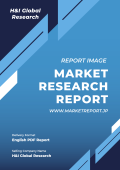1 Preface
2 Scope and Methodology
2.1 Objectives of the Study
2.2 Stakeholders
2.3 Data Sources
2.3.1 Primary Sources
2.3.2 Secondary Sources
2.4 Market Estimation
2.4.1 Bottom-Up Approach
2.4.2 Top-Down Approach
2.5 Forecasting Methodology
3 Executive Summary
4 Japan Generic Drug Market – Introduction
4.1 What are Generic Drugs?
4.2 Unbranded and Branded Generic Drugs
4.3 Authorized Generic Drugs
5 Why is the Japanese Generic Drug Market So Lucrative
5.1 Blockbuster Drugs Going Off-Patent
5.2 Rising Healthcare Costs Coupled with an Increasing Ageing Population
5.3 Japan Has One of the Lowest Penetration of Generics
5.4 Incentives for Dispensing Generics
5.5 Significant Savings for Payers and Providers
5.6 Biosimilars
6 Global Generic Drug Market
6.1 Market Performance
6.1.1 Value Trends
6.1.2 Volume Trends
6.2 Market Breakup by Country
6.2.1 Market Breakup by Volume
6.2.2 Market Breakup by Value
6.3 Market Forecast
6.4 Most Prescribed Generic and Branded Drugs
7 Japan Generic Drug Market
7.1 Japan Pharmaceutical Market Performance
7.1.1 Value Trends
7.1.2 Volume Trends
7.1.3 Market Breakup by Type
7.1.4 Market Forecast
7.2 Japan Generic Drug Market Performance
7.2.1 Value Trends
7.2.2 Volume Trends
7.2.3 Impact of COVID-19
7.2.4 Market Forecast
8 SWOT Analysis
8.1 Overview
8.2 Strength
8.3 Weakness
8.4 Opportunities
8.5 Threats
9 Pricing Mechanism and Profit Margins at Various Levels of Supply Chain
10 Porter’s Five Forces Analysis
10.1 Overview
10.2 Bargaining Power of Buyers
10.3 Bargaining Power of Suppliers
10.4 Degree of Competition
10.5 Threat of New Entrants
10.6 Threat of Substitutes
11 Japan Generic Drug Market- Competitive Landscape
11.1 Japan Generic Drug Market – Competitive Structure
11.2 Japan Generic Drug Market – Breakup by Key Players
11.3 Japan Generic Drug Market – Breakup by Distribution Channel
12 Japan Generic Drug Market- Value Chain Analysis
12.1 Research and Development
12.2 Manufacturing
12.3 Marketing
12.4 Distribution
13 Regulations in Japan Generics Industry
13.1 Approval Pathway of a Generic Drug in Japan
13.1.1 Master File Scheme for Active Ingredients
13.1.2 Equivalency Review
13.1.3 Conformity Audit
13.2 Certifications
13.2.1 MAH (Market Authorization Holder) License for Product Approval
13.2.2 FMA (Foreign Manufacturer Accredited) Certification for Product Approval
13.2.3 DMF (Drug Master File) Registration
13.2.4 GMP (Good Manufacturing Practices) Certification
13.2.5 Manufacturer’s License
14 Japan Generic Drug Market: Key Success Factors
15 Japan Generic Drug Market: Road Blocks
16 Requirements for Setting up a Generic Drug Manufacturing Plant
16.1 Manufacturing Process
16.2 Raw Material Requirements
16.3 Raw Material Pictures
16.4 Land and Construction Requirements
16.5 Machinery and Infrastructure Requirements
16.6 Machinery Pictures
16.7 Plant Layout
16.8 Packaging Requirements
16.9 Utility Requirements
16.10 Manpower Requirements
17 Japan Generic Drug Market – Key Company Profiles
Figure 2: Classification of Generic Drugs
Figure 3: Penetration of Generic Drugs Across Various Developed Markets
Figure 4: Global: Generic Drug Market: Sales Value (in Billion US$), 2017-2022
Figure 5: Global: Generic Drug Market: Sales Volume (in Billion Units), 2017-2022
Figure 6: Global: Generic Drug Market: Sales Value Breakup by Country (in %), 2022
Figure 7: Global: Generic Drug Market: Sales Volume Breakup by Country (in %), 2022
Figure 8: Global: Generic Drug Market Forecast: Sales Value (in Billion US$), 2023-2028
Figure 9: Global: Generic Drug Market Forecast: Sales Volume (in Billion Units), 2023-2028
Figure 10: Japan: Pharmaceutical Market: Sales Value (in Billion JPY), 2017-2022
Figure 11: Japan: Pharmaceutical Market: Sales Volume (in Billion Units), 2017-2022
Figure 12: Japan: Pharmaceutical Market Forecast: Sales Value (in Billion JPY), 2023-2028
Figure 13: Japan: Pharmaceutical Market Forecast: Sales Volume (in Billion Units), 2023-2028
Figure 14: Japan: Pharmaceutical Market: Sales Volume Breakup of Branded and Generic Drugs (in %), 2017 and 2022
Figure 15: Japan: Pharmaceutical Market: Sales Value Breakup of Branded and Generic Drugs (in %), 2017 and 2022
Figure 16: Japan: Generic Drug Market: Sales Value (in Billion US$), 2017-2022
Figure 17: Japan: Generic Drug Market Forecast: Sales Value (in Billion US$), 2023-2028
Figure 18: Japan: Generic Drug Market: Sales Volume (in Billion Units), 2017-2022
Figure 19: Japan: Generic Drug Market Forecast: Sales Volume (in Billion Units), 2023-2028
Figure 20: Japan: Generic Drug Market: Breakup by Key Players (in %)
Figure 21: Japan: Generic Drug Market: Breakup by Distribution Channel (in %)
Figure 22: Japan: Generic Drug Industry: SWOT Analysis
Figure 23: Pricing Mechanism and Profit Margins at Various Levels of the Supply Chain
Figure 24: Japan: Generic Drug Industry: Porter’s Five Forces Analysis
Figure 25: Japan: Generic Drug Industry: Value Chain Analysis
Figure 26: Japan: Generic Drug Manufacturing: Detailed Process Flow
Figure 27: Japan: Generic Drug Manufacturing: Raw Material Requirements
Figure 28: Japan: Generic Drug Manufacturing Plant: Proposed Plant Layout
Figure 29: Japan: Generic Drug Manufacturing: Packaging Requirements
Figure 30: Japan: Approval Pathway for a Generic Drug
Table 1: Japan: Sales (in Billion US$) and Patent Expiry of Major Drugs Expected to Lose Patent Protection (in Billion US$)
Table 2: Japan: History of Major Policies to Encourage the Use of Generic Drugs
Table 3: Japan: Expenses of Generic and Branded Drug Manufacturers (in %)
Table 4: Major Biosimilar Product Under Development as of March 2021
Table 5: Japan: Generic Drug Market: Key Industry Highlights, 2022 and 2028
Table 6: Global: Generics Market: Volume Performance of Top Molecules (in Million Prescriptions)
Table 7: Global: Branded Drug market: Volume Performance of Top Branded Drugs (in Million Prescriptions)
Table 8: Japan: Generic Drug Industry: Market Structure
Table 9: Generic Drug Manufacturing Plant: Machinery Costs (in US$)
Table 10: Generic Oncology Drug Manufacturing Plant: Costs Related to Salaries and Wages (in US$)
Table 11: Japan: Data Requirements for a New Generic Drug Application
Table 12: Japan: Various Bioequivalence Guidelines for Generic Drugs
Table 13: Japan: Timeline for New Generic Drug Approval
Table 14: Japan: Review Time of the Application for Partial Change Approval
Table 15: Nichi-Iko Pharmaceutical Co., Ltd: Key Financials (in US$ Million)
Table 16: Sawai Pharmaceutical Co., Ltd: Key Financials (in US$ Million)
Table 17: Towa Pharmaceutical: Key Financials (in US$ Million)
Table 18: Teva Pharmaceutical Ltd: Key Financials (in US$ Million)
Table 19: Fuji Pharma Co Ltd: Key Financials (in US$ Million)











